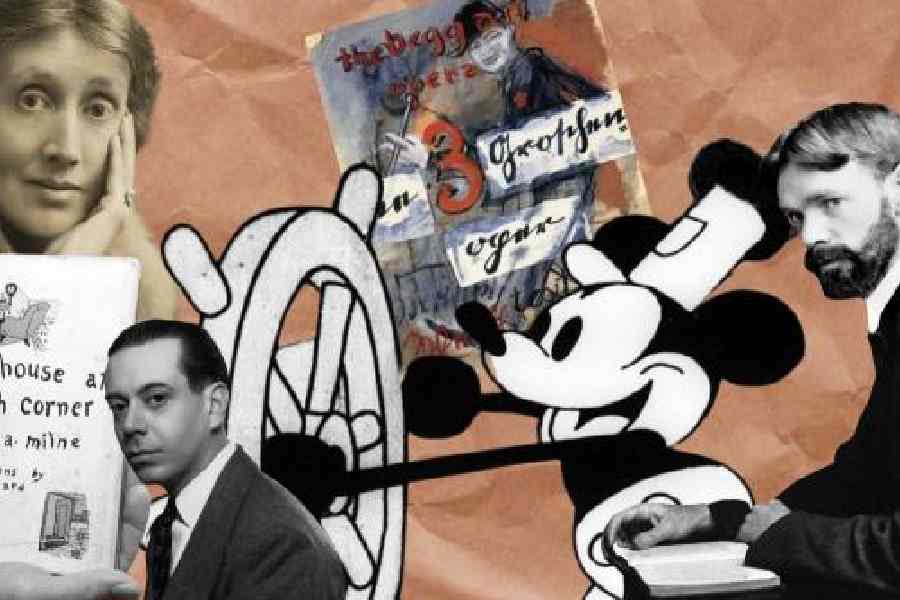January has always been the month of vintage artistic creations becoming available in the public domain for anyone to use and adapt. This year, there are some notable names on the list, especially the first cinematic iterations of Mickey Mouse.
Ninety-five years after the 1928 animated short film Steamboat Willie made its debut, the original Mickey and Minnie Mouse are entering the public domain in the US. It means the poster rodent can be remade on the page, stage and screen. This is the Mickey and Minnie from our grandfather’s days and the public only gains the right to creatively use the black-and-white Disney characters strictly as they appear in the 1928 film.
A number of protections around Mickey Mouse remain. The character we are talking about doesn’t include design changes made in later works, like Sorcerer’s Apprentice Mickey from Fantasia in 1940. Further, you can’t produce a work that falsely represents itself as a Disney production or a piece of official merchandise. So strictly, you can only build on Mickey Mouse 1.0 which is far from the iconic character that we celebrate today.
“While the safest approach may be to stick to Mickey circa 1928 in new creations, copyright law also lets you use later material that does not qualify for copyright. Your mouse can speak intelligibly in a high voice even though Mickey 1.0 does not do so; giving a talking mouse a squeaky voice is not copyrightable. Generic character traits such as being adorable and having less jaunty dance moves are fair game. What’s more, anything you ‘independently create’ — or come up with yourself — is legal. Choosing your own colour scheme is fine; you do not have to stick to black and white,” said Jennifer Jenkins, director, Duke Centre for the Study of the Public Domain.

The original 1928 script for Disney's Steamboat Willie, the first cartoon to star Mickey Mouse
What happened as soon as a version of the famous rodent entered the public domain? There was a reupload of the original Steamboat Willie on YouTube and it gained over 400,000 views in the first 24 hours. Second, there is already an AI generator trained on the 1928 Mickey Mouse.
Steamboat Willie was originally scheduled to enter the public domain in 1984, fifty-six years after it was released but that timeline was extended several times, most recently in 1998 by a US congressional act that established the current 95-year limit.
Joining Mickey in the public domain in the US are Tigger, who will be reunited with Winnie the Pooh; the musical composition for Cole Porter’s Let’s Do It (Let’s Fall in Love); the original German composition of Threepenny Opera song Mack the Knife (plus the German production); D.H. Lawrence’s Lady Chatterley’s Lover; J.M. Barrie’s play Peter Pan; or, the Boy Who Wouldn’t Grow Up; and, Virginia Woolf’s Orlando.
What can happen in the public domain? There is already a slasher film called Winnie the Pooh: Blood and Honey. On January 1, 2022, the copyright to A.A. Milne’s 1926 book, Winnie-the-Pooh, expired, entering the public domain but Tigger didn’t show up until 1928 in Milne’s The House at Pooh Corner.
Lady Chatterley’s Lover was banned for decades in many countries because of its candid descriptions of sex. The story revolves around Constance Reid, who has an affair with her husband’s gamekeeper.
As for Mack the Knife, most of us know it as a Bobby Darin song but it’s originally a song from The Threepenny Opera. Created by writer and lyricist Bertolt Brecht and composer Kurt Weill, the production follows the London criminal Macheath, known as Mackie Messer. Louis Armstrong recorded the first American version in 1955 and then came Darin’s famous version in 1959.











